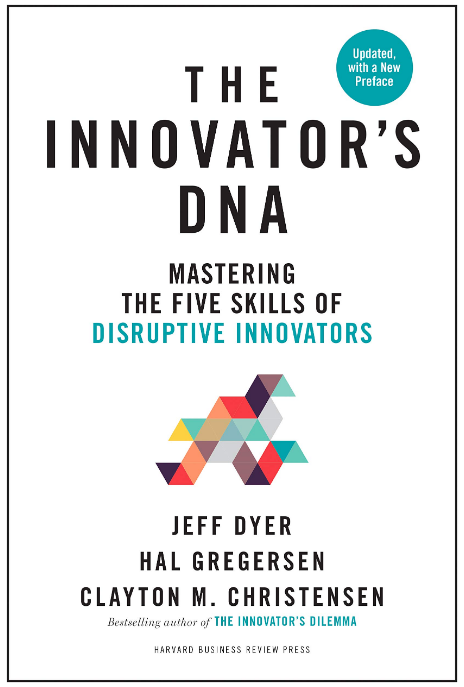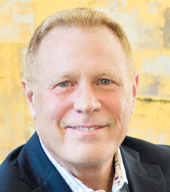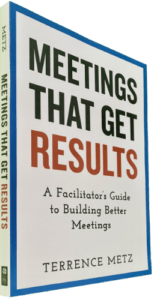To facilitate innovation for products or processes provides a significant life force and has become a strategic priority for most companies and organizations.
An IBM poll of fifteen hundred CEOs identified creativity as the number one “leadership competency” of the future. A new and remarkable discovery is that the ability to facilitate innovation and innovative ideas is not merely a function of the mind, but it is also a function of behaviors.
Product Innovation, a Mindset that Generates Profit
 The Harvard Business Press book “The Innovator’s DNA: Mastering the Five Skills of Disruptive Innovators” provides compelling ways to stir product innovation. The work of authors Jeffrey Dyer, Hal Gregersen, and Clayton Christensen emerged from an eight-year collaborative study to uncover the origins of innovation. They were less concerned with the companies’ strategies and focused on understanding the people responsible for turning creativity into value propositions.
The Harvard Business Press book “The Innovator’s DNA: Mastering the Five Skills of Disruptive Innovators” provides compelling ways to stir product innovation. The work of authors Jeffrey Dyer, Hal Gregersen, and Clayton Christensen emerged from an eight-year collaborative study to uncover the origins of innovation. They were less concerned with the companies’ strategies and focused on understanding the people responsible for turning creativity into value propositions.
Five skills surfaced from their investigation including one cognitive (i.e., genetic) talent and four acquired behaviors. The cognitive skill is called “associational thinking” or the ability to make connections across seemingly unrelated fields, problems, or ideas. The other four skills are learned (i.e., behavioral) and include:
- Experimenting
- Networking
- Observing
- Questioning
Facilitate Innovation for Products or Processes
To our regular readers, perhaps not surprisingly, the required behaviors are virtually identical to the core skills of our professionally trained MGRUSH facilitators. The researchers discovered that innovators are much more likely to question, observe, network, and experiment than typical executives. They also discovered that innovative companies are always (ALWAYS) led by innovative leaders.
“ . . . Innovative people systematically engage in questioning, observing, networking, and experimenting behaviors to spark new ideas. Similarly, innovative organizations systematically develop processes that encourage questioning, observing, networking, and experimenting by new employees.”
How to Facilitate Innovation
In their discussion of innovative failures, the authors discovered that people did not ask all the right questions . . . thus they emphasize the value of the discovery skill. In other words, we must be willing to challenge our people to think clearly. According to the authors, the behavioral focus found in our facilitative leadership training could pay for the training in a matter of weeks.
Their book also provides details on how to calculate an innovation premium for companies; i.e., the proportion of a company’s market value that cannot be accounted for from cash flows of current products or markets. Investors take note. This factor alone could pay for the time you took to read this blog, many times over. The innovation advantage found in our curriculum can be converted into a premium for your organizational value by building the code (i.e., DNA) for innovation directly into your people, methods, and guiding philosophies—beginning with a facilitative and collaborative culture.
Encouraging and developing ideas is the easiest of the three activities required to operate the tool called “Brainstorming.” The other two activities include analysis and convergence (or, decision). Whether you use an easel or a spreadsheet, Post-it® notes, or illustrated drawings, the first principle of brainstorming, as intended by Alex Osborne, is to encourage capturing lots of ideas without constraint or judgment. Most novice facilitators become the first person in the meeting to violate this principle by asking for a definition or further explanation, such as “Tell us more about _____.” Facilitate innovation by . . .
Regardless of HOW you gather ideas, embrace the first principle we call “Ideation.” First, to facilitate innovation, begin by embracing a discrete set of ground rules during the ideation activity.
Ideation Ground Rules
- No discussion

Facilitate Innovation: Get Out of the Box
- Fast pacing, high-energy
- All ideas allowed
- Be creative—experiment
- Build on the ideas of others
- Suspend judgment, evaluation, and criticism
- Passion is good
- Accept the views of others
- Stay focused on the topic
- Everyone participates
- No word-smithing
- When in doubt, leave it in
- The ideation step is informal
- 5-Minute Limit Rule (i.e., ELMO doll — Enough, Let’s Move On)
What to Expect When You Facilitate Innovation
In our experience, having used all of these rules at one time or another, the first four (shown in bold font) consistently add value. For example, a few of the ideation rules suggest that someone has made a remark (e.g., No word-smithing). If the facilitator carefully polices the very first ground-rule (i.e., No discussion), then it obviates the need for some of the other ground rules. When you facilitate ideation, always stress the first two especially.
The ELMO rule is also not necessary if the activity is closely policed. How long can a group maintain “high energy”? If the group is working with high energy at the five-minute mark, do you really want to shut them down? It is likely that energy will begin to die down in the next few minutes anyway, so if closely monitored, the formal rule is not necessary. Typically the facilitator should expect to wind down the ideation activity within six to eight minutes anyway. Larger groups may keep up high energy for ten to twelve minutes, but it is most unlikely that any group will maintain true “high energy” for fifteen to twenty minutes when you facilitate ideation. Of course, you can always change their perspectives.
Once the ideation activity is complete, the real work begins. What are you going to do with the list? The first challenge is normally about definition and what something specifically means. Then comes the hard part, analysis. What are you going to do with that list?
______
Don’t ruin your career by hosting bad meetings. Sign up for a workshop or send this to someone who should. MGRUSH workshops focus on meeting design and practice. Each person practices tools, methods, and activities every day during the week. Therefore, while some call this immersion, we call it the road to building high-value facilitation skills.
Our workshops also provide a superb way to earn up to 40 SEUs from the Scrum Alliance, 40 CDUs from IIBA, 40 Continuous Learning Points (CLPs) based on Federal Acquisition Certification Continuous Professional Learning Requirements using Training and Education activities, 40 Professional Development Units (PDUs) from SAVE International, as well as 4.0 CEUs for other professions. (See workshop and Reference Manual descriptions for details.)
Want a free 10-minute break timer? Sign up for our once-monthly newsletter HERE and receive a timer along with four other of our favorite facilitation tools, free.
Related articles
- Yes, You Can Brainstorm Without Groupthink (blogs.hbr.org)
- 5 Idea Generators (& Idea Killers) (inc.com)
- Can Innovation Be a Structured Repeatable Process? (customerthink.com)

Terrence Metz, president of MG RUSH Facilitation Training, was just 22-years-old and working as a Sales Engineer at Honeywell when he recognized a widespread problem—most meetings were ineffective and poorly led, wasting both time and company resources. However, he also observed meetings that worked. What set them apart? A well-prepared leader who structured the session to ensure participants contributed meaningfully and achieved clear outcomes.
Throughout his career, Metz, who earned an MBA from Kellogg (Northwestern University) experienced and also trained in various facilitation techniques. In 2004, he purchased MG RUSH where he shifted his focus toward improving established meeting designs and building a curriculum that would teach others how to lead, facilitate, and structure meetings that drive results. His expertise in training world-class facilitators led to the 2020 publication of Meetings That Get Results: A Guide to Building Better Meetings, a comprehensive resource on effectively building consensus.
Grounded in the principle that “nobody is smarter than everybody,” the book details the why, what, and how of building consensus when making decisions, planning, and solving problems. Along with a Participant’s Guide and supplemental workshops, it supports learning from foundational awareness to professional certification.
Metz’s first book, Change or Die: A Business Process Improvement Manual, tackled the challenges of process optimization. His upcoming book, Catalyst: Facilitating Innovation, focuses on meetings and workshops that don’t simply end when time runs out but conclude with actionable next steps and clear assignments—ensuring progress beyond discussions and ideas.



Fantastic blog !
Glad you approve. It has been recently updated, refreshed, and powered on.